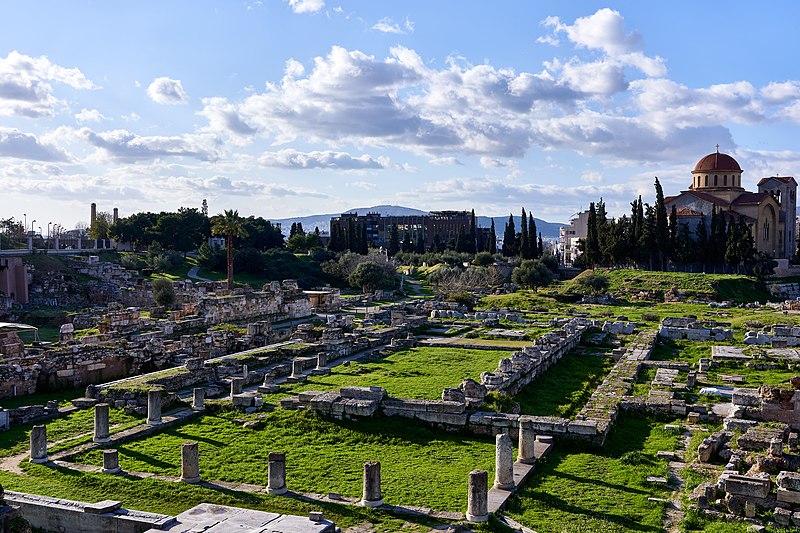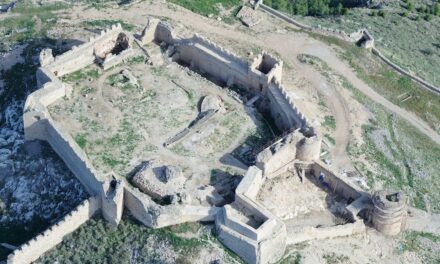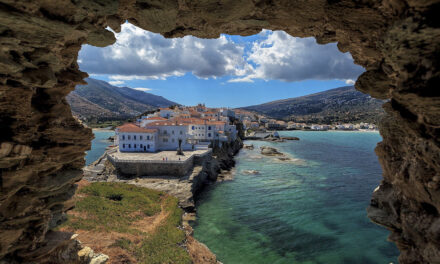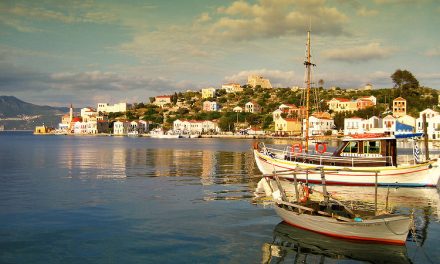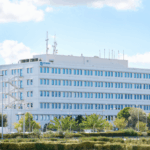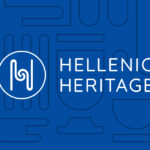Kerameikos is an area of Athens, named after the eponymous ancient dēmos. It is situated northwest of the Acropolis and includes an extensive area. In the last two decades it has come to be known as one of the main entertainment districts in the capital, yet not many are aware of its long history and great archaeological interest.
The name of the ancient demos (a suburb/subdivision of ancient Attica) came from the word keramos “tile/potter’s clay” (also the root of the word “ceramic”). The geographer Pausanias believed that Kerameikos took his name from the hero Keramos, son of a Dionysus and Ariadne. It is however widely accepted that it was called thus because this is where the potters’ workshops used to be. It was divided into two parts; the “inner Kerameikos”, the “potter’s quarter”, was found within the Themistoclean Wall. Fluvial clays deposited by the river Eridanos provided potters with a rich supply of clay. The area thus became the main production centre for the famous Attic vases.
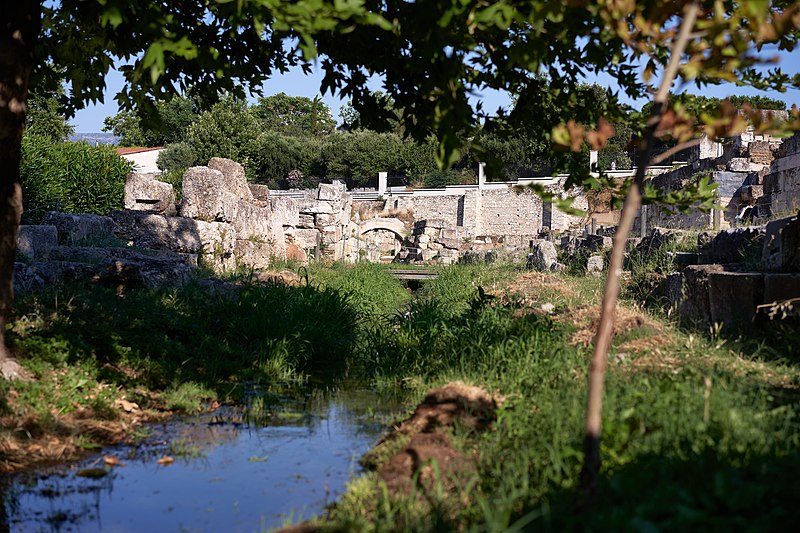 Eridanos River at Kerameikos (by George E. Koronaios via Wikimedia Commons)
Eridanos River at Kerameikos (by George E. Koronaios via Wikimedia Commons)
The “outer Kerameikos” covered the area beyond the city walls towards the site of the Academy, which was used as a burial ground for centuries. This included the “demosion sema” (public cemetery), the resting place of those fallen in battle and of eminent Athenians. This is where Pericles, the celebrated general and statesman, delivered his famous funeral oration at the start of the Peloponnesian War, and where his own remains might be buried.
Inner and outer Kerameikos were divided by the city’s fortifications but connected by a double-arched gate called Dipylon (double gate) and also by the smaller neighbouring Sacred Gate, through which the river Eridanos also flowed. Dipylon was of major ceremonial significance as the starting point of the procession of the Great Panathenaea, which moved along the large road also known as panathenaic road; through the Sacred Gate ran the Sacred Way (Iera Odos) which led to Eleusina, and which was walked by a solemn procession on their way to the Eleusinian Mysteries.
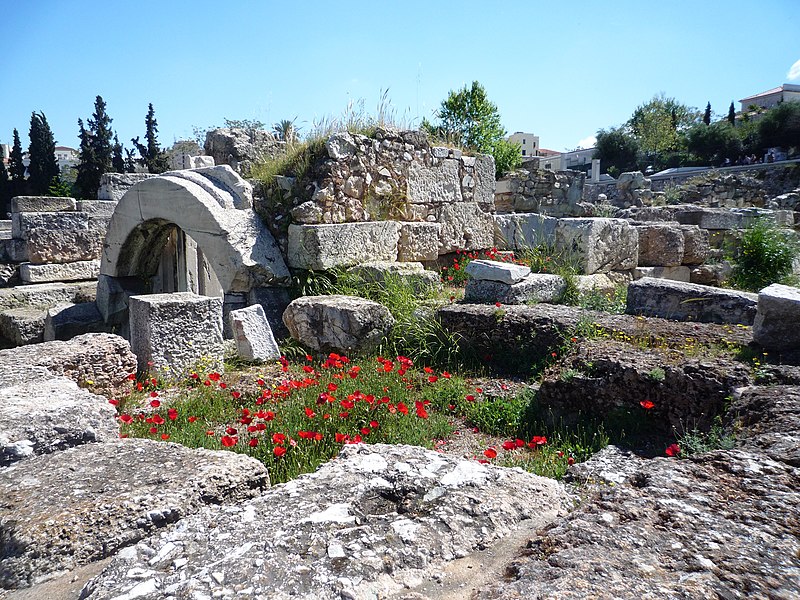 Kerameikos cemetery (by Sjaak Kempe via flickr)
Kerameikos cemetery (by Sjaak Kempe via flickr)
Close to the remains of the walls and the gates we also find the ruins of the Pompeion and the Fountain House. Τhe Pompeion was a large building, dating to the 4th c. BC, which stood in the space between the Dipylon and the Sacred Gate; its name comes from the word pompe “procession”, and this is where ceremonial objects related to the various processions were kept, especially the the Panathenaic Festival. This was also the point of gathering where preparations for the Panathenaic procession took place. It consisted of a large courtyard surrounded by columns and banquet rooms. The hypostyle fountain was located on the left side of the entrance of the Dipylon and provided a continuous supply of water to the inhabitants of the city and the travellers. It was built in 307-304 BC.
The area of Kerameikos was used as a burial ground for many centuries; according to the Hellenic Ministry of Culture, the earliest tombs discovered there by archaeologists “date to the Early Bronze Age (2700-2000 BC), and the cemetery appears to have continuously expanded from the sub-Mycenaean period (1100-1000 BC)”. It is also noted that “in the Geometric (1000-700 BC) and Archaic periods (700-480 BC) the number of tombs increased; they were arranged inside tumuli or marked by funerary monuments. The cemetery was used incessantly from the Hellenistic period until the Early Christian period (338 BC until approximately the sixth century AD). “
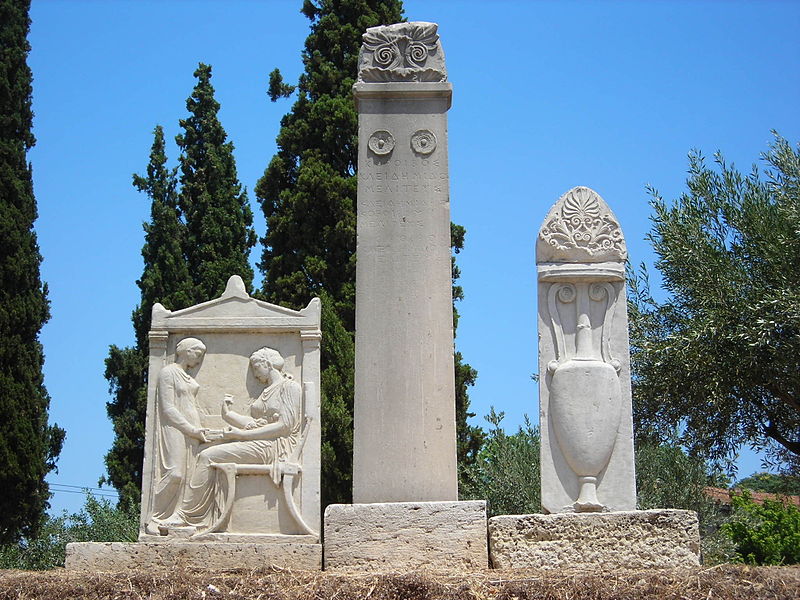 Copies of funerary Steles on the site of Kerameikos (by Therese Clutario via Wikimedia Commons)
Copies of funerary Steles on the site of Kerameikos (by Therese Clutario via Wikimedia Commons)
Archaeological excavations in the Kerameikos began in 1870 under St. Koumanoudis of the Archaeological Society of Athens. They have continued from 1913 to the present day under the German Archaeological Institute at Athens. During the construction of Kerameikos station for the Athens Metro, approximately 1,000 tombs from the 4th and 5th centuries BC were discovered, along with a mass grave evidently dug for victims of the Plague of Athens. Recent expropriations of neighboring land plots are expected to expand the site and allow further excavations to take place in the future.
The excavations have uncovered many important findings; among those that stand out are the “Kerameikos steles“, a collection of sculptures used as grave-markers. Due to the area’s long use as a necropolis, they cover a great variety of styles and shapes, including the naiskos stele, lekythos graves, and kore. The naiskos stele has the form of a small temple with columns and a pediment at the top; this style gained popularity in the 5th century B.C., and famous examples include the Grave Stele of Dexileos and the Grave Stele of Hegeso.
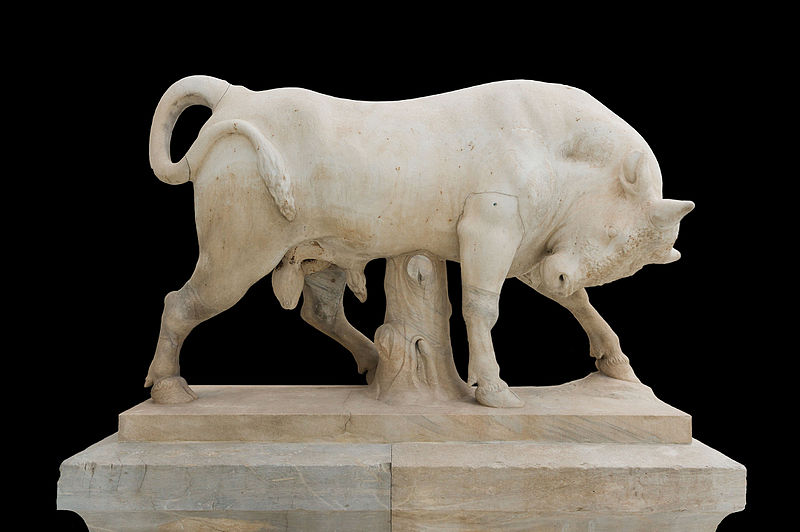 Bull from the grave enclosure of Dionysios of Kollytos, marble, 345-340 BC (by Jebulon via Wikimedia Commons)
Bull from the grave enclosure of Dionysios of Kollytos, marble, 345-340 BC (by Jebulon via Wikimedia Commons)
Since the site comprised a potters’ quarter and a necropolis, archaeological research has also produced a large number of high quality ceramics, coming from both the workshops and the burial grounds, since they were used as grave goods. These include urns, lekythoi, kraters, amphorae etc. Some of the most famous examples include the large Dipylon krater showcased at the New York Met, as well as the impressive Dipylon amphora and the oenochoe, both housed at the National Archaeological Museum of Athens. The latter bears the famed Dipylon inscription, one of the oldest samples of the use of the Greek alphabet, dated to ca. 740 BC.
Many of the findings from the site can be viewed at the Kerameikos Archaeological Museum, built in 1937 and renovated ahead of the 2004 Olympic Games. It houses almost exclusively funerary art and burial goods discovered there; these includes statues, steles, ceramics, jewelry and more. Here you can find most of the finds from the more recent excavations, such as the towering Kouros unearthed in 2002, and also other important exhibits such as the bull from the grave enclosure of Dionysios of Kollytos or the Grave Stele of Dexileos.
M. V. (Intro image: Ruins of the Pompeion at Kerameikos [by George E. Koronaios via Wikimedia Commons])
Read also via Greek News Agenda: “Eleusis, the great mysteries” at the Acropolis Museum ; The Plague of Athens as told by Thucydides: a timeless analysis of an epidemic; Tower of the Winds: The world’s oldest “weather station”; Philippi: a “small Rome” in Macedonia
TAGS: ARCHEOLOGY | ATHENS | HISTORY | TOURISM

